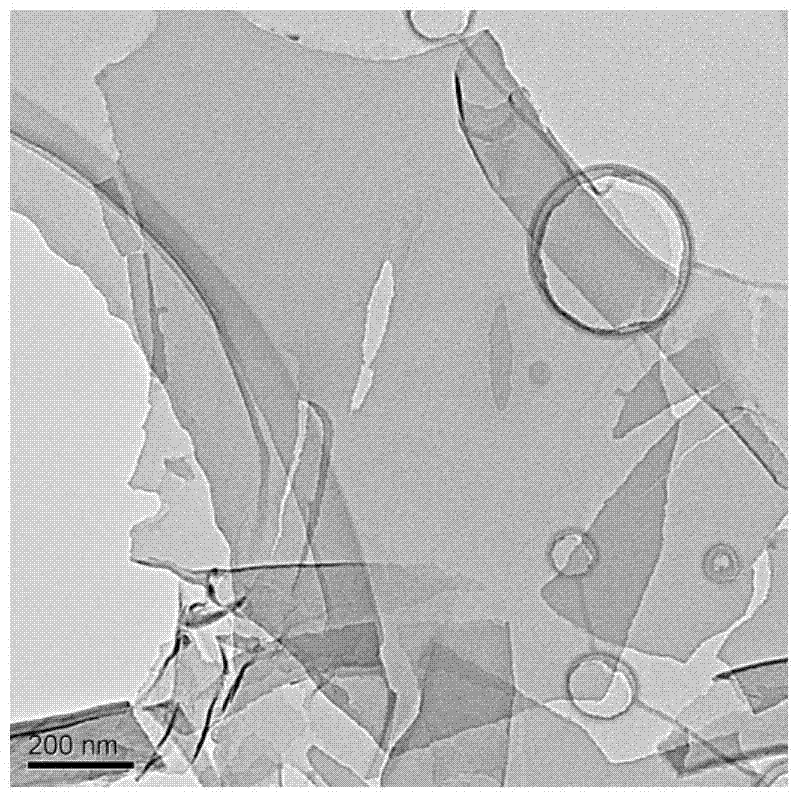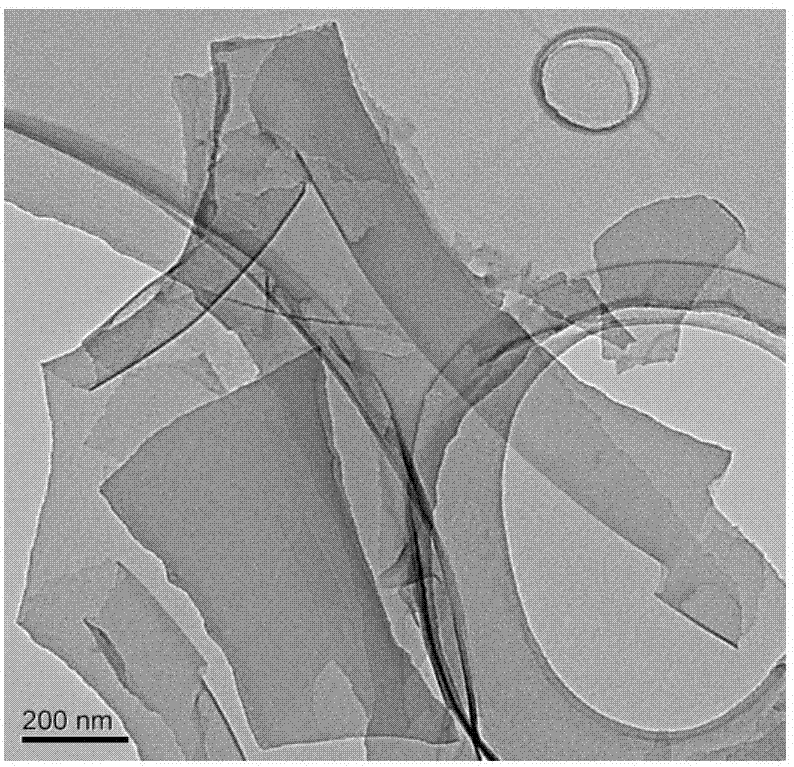Method for high yield preparation of graphene by using biologic carbon source material
A bio-carbon source and graphene technology, applied in the direction of graphene, nano-carbon, etc., to achieve high yield, low cost, and controllable preparation process
- Summary
- Abstract
- Description
- Claims
- Application Information
AI Technical Summary
Problems solved by technology
Method used
Image
Examples
Embodiment 1
[0036] Commercially available cellulose (45% carbon content) was microwaved at 300 W for 10 min. The treated samples were immersed in dilute H at a concentration of 1% at room temperature. 2 SO 4 In the aqueous solution, stir at a constant speed of 30 r / min for 5 hours. After the sample is washed with water, it is placed in a fume hood to dry, and the wind speed is set to 3m / s, and the air volume is 800m 3 / h, keep the ventilated state for 12 hours. The dried sample was mixed with 1% platinum-rhodium alloy (platinum content 12%), then transferred to a tube furnace, fed with nitrogen, and kept for 5 minutes. The tube furnace was heated up to 900°C, heated for 6 hours, and after cooling to room temperature, graphene with obvious exfoliation was obtained. TEM results showed that the obtained graphene sheet thickness was about 3nm, the yield of graphene was 18%, and the purity was 94%.
Embodiment 2
[0038] Commercially available cellulose (45% carbon content) was microwaved at 300 W for 10 min. The treated samples were immersed in 3% dilute H at room temperature. 2 SO 4 In the aqueous solution, stir at a constant speed of 30 r / min for 5 hours. After the sample is washed with water, it is placed in a fume hood to dry, and the wind speed is set to 3m / s, and the air volume is 800m 3 / h, keep the ventilated state for 12 hours. The dried sample was mixed with 12% palladium-iron alloy (19% palladium content) and then transferred to a tube furnace, where hydrogen gas was introduced and kept for 5 minutes. The tube furnace was heated to 1600°C, heated for 3 hours, and cooled to room temperature to obtain graphene with obvious exfoliation. TEM results showed that the obtained graphene sheet thickness was about 5nm, the yield of graphene was 21%, and the purity was 91%.
Embodiment 3
[0040] Commercially available cellulose (45% carbon content) was microwaved at 300 W for 30 min. The treated samples were immersed in dilute H at a concentration of 1% at room temperature. 2 SO 4 In the aqueous solution, stir at a constant speed of 30 r / min for 5 hours. After washing the samples, place them in a fume hood to dry, set the wind speed to 3m / s, and the air volume to 1000m 3 / h, keep the ventilated state for 12 hours. The dried sample was mixed with 2% platinum-rhodium alloy (platinum content 10%), then transferred to a tube furnace, fed with water vapor, and kept for 5 minutes. The tube furnace was heated to 600°C, heated for 8 hours, and after cooling to room temperature, graphene with obvious exfoliation was obtained. TEM results showed that the obtained graphene sheet thickness was about 4nm, the yield of graphene was 16%, and the purity was 93%.
PUM
 Login to View More
Login to View More Abstract
Description
Claims
Application Information
 Login to View More
Login to View More - R&D
- Intellectual Property
- Life Sciences
- Materials
- Tech Scout
- Unparalleled Data Quality
- Higher Quality Content
- 60% Fewer Hallucinations
Browse by: Latest US Patents, China's latest patents, Technical Efficacy Thesaurus, Application Domain, Technology Topic, Popular Technical Reports.
© 2025 PatSnap. All rights reserved.Legal|Privacy policy|Modern Slavery Act Transparency Statement|Sitemap|About US| Contact US: help@patsnap.com


